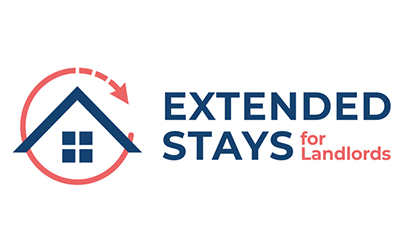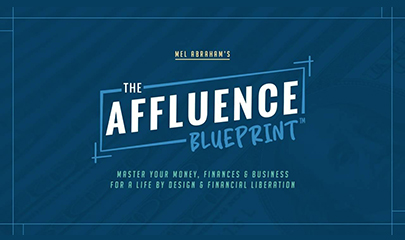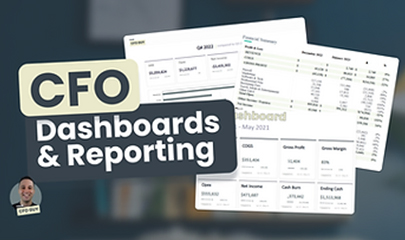-
×
 Extended Stays for Landlords By Al Williamson
1 × $419,00
Extended Stays for Landlords By Al Williamson
1 × $419,00
ESG for Commercial Lenders By Kyle Peterdy – CFI Education
$15,00
SKU: KOB.52917uac0ER
Category: Finance
Tags: CFI Education, ESG for Commercial Lenders, Kyle Peterdy
ESG for commercial lenders: A transformative approach by Kyle Peterdy – Digital Download!
Let’s embark on a captivating adventure to uncover remarkable insights that spark your curiosity and elevate your understanding
ESG for Commercial Lenders By Kyle Peterdy – CFI Education
Overview

ESG for commercial lenders: A transformative approach by Kyle Peterdy
The rise of Environmental, Social, and Governance (ESG) factors in the credit assessment landscape is akin to a new dawn piercing the veil of traditional lending practices. In the revolutionary course developed by Kyle Peterdy at CPA Ontario, participants delve into the intricate relationship between ESG considerations and the creditworthiness of borrowers. This course is not merely an academic exercise; it offers practical skills and insights that are poised to reshape commercial lending. As traditional credit evaluations often overlook critical ESG influences, this course equips lenders to assess risk in a world where sustainability is increasingly imperative.
Understanding ESG Factors in Commercial Lending
The Significance of ESG Factors
The importance of examining ESG factors in commercial lending cannot be overstated. Traditionally, credit risk assessments have primarily revolved around financial metrics, often overlooking the potential impacts of climate risks and a borrower’s social and governance profiles. According to a study by the Global Sustainable Investment Alliance, investments focusing on ESG criteria have grown significantly, underscoring the shifting tide in financial decision-making.
In essence, ESG factors can be thought of as the invisible threads that bind companies to their reputations and long-term viability. A company neglecting its social responsibilities may find itself embroiled in scandals that can drastically affect its bottom line. Similarly, businesses that fail to address climate risks could face substantial asset devaluation, especially those relying on physical assets as collateral. A robust understanding of these dynamics enables lenders to better predict a borrower’s potential to meet their obligations, ensuring that their financial decisions are as sound as they are socially responsible.
The Risks of Ignoring ESG
Ignoring ESG factors could prove detrimental for commercial lenders. By sidelining these considerations, lenders might miscalculate credit risk, leading to significant financial losses. For instance, a recent case study by the Carbon Disclosure Project highlighted numerous companies facing financial repercussions due to inadequate responses to environmental regulations.
In the lending arena, this translates to missed opportunities and unforeseen risks. Imagine financing a manufacturing firm that emits pollutants beyond regulatory thresholds lenders would be unknowingly exposing themselves to substantial financial liabilities. In a rapidly evolving market where real-time reputational feedback loops are possible thanks to social media, the speed at which harmful perceptions can affect a company’s financial health is unprecedented.
Course Structure and Learning Approach
Interactive Case Studies
One of the standout features of Kyle Peterdy’s course is its incorporation of interactive case studies. This experiential learning approach enables participants to work with real-world scenarios, analyzing how ESG factors influence borrowing clients. Participants engage deeply with case studies to discern the nuanced ways in which ESG risks manifest.
Through these exercises, professionals can appreciate the implications of ESG factors on business operations. Take, for example, a hypothetical textile company that struggles with labor practices, which, in turn, affects its relationship with suppliers and customers. Participants learn to evaluate the broader implications of such social issues on the company’s financial results and creditworthiness.
Downside Sensitivity Analysis
An essential component of the course is the focus on conducting downside sensitivity analyses from an ESG perspective. This analytical technique allows lenders to simulate adverse outcomes based on various ESG scenarios. For instance, participants might assess how a severe climate event could impact a borrower’s operational capabilities and asset valuation.
Engaging in these analyses empowers lenders to develop a more holistic understanding of risk, making them more adept at navigating the complexities of modern lending. It cultivates a mindset that values adaptability and foresight qualities essential for the contemporary credit professional striving to thrive in an evolving economic landscape.
Practical Applications of ESG in Lending Decisions
Enhanced Credit Risk Evaluation
A significant takeaway from the course is the skill to incorporate ESG variables into financial models. Acquiring the ability to compute a borrower’s attribution factor using the Partnership for Carbon Accounting Financials (PCAF) standards allows lenders to quantify a borrower’s emissions and subsequent risks.
By integrating these calculations into their lending practices, credit professionals can enhance their risk evaluations considerably. Not only does this improve decision-making, but it also ensures alignment with global sustainability initiatives. In a world increasingly tilted towards responsible financial decision-making, lenders possessing these skills gain a competitive edge, fostering not just profitability but also sustainability.
Building a Responsible Lending Environment
The course ultimately aims to cultivate a more responsible lending environment. By buttressing traditional credit assessments with ESG insights, lenders can champion sustainability in their decision-making processes. This transformation can be visualized as planting seeds of change in time, these seeds will grow into a more resilient financial ecosystem where both lenders and borrowers flourish.
Key Takeaways
To summarize, here are the crucial insights gleaned from Kyle Peterdy’s course:
- Understanding Risk: Realizing that ESG factors significantly influence creditworthiness.
- Applied Learning: Engaging in hands-on case studies to analyze real-world scenarios.
- Quantitative Analysis: Learning to compute borrowers’ attribution factors with PCAF standards.
- Effective Integration: Incorporating ESG variables into financial models for improved assessments.
- Fostering Sustainability: Championing responsible lending that adapts to global sustainability trends.
Conclusion
The voice of sustainability is no longer a whisper in the boardrooms; it is a clarion call. The course on ESG for commercial lenders by Kyle Peterdy is a beacon for those looking to navigate this new landscape with confidence and competence. By embracing ESG factors, lenders can fundamentally change how they assess credit risk, ultimately contributing to a more sustainable financial ecosystem. As we face an age where the consequences of our financial decisions extend beyond mere profit and loss, taking proactive steps to integrate ESG factors into lending practices is not just prudent it is imperative.
Frequently Asked Questions:
Innovation in Business Models: We use a group purchase approach that enables users to split expenses and get discounted access to well-liked courses. Despite worries regarding distribution strategies from content creators, this strategy helps people with low incomes.
Legal Aspects to Take into Account: Our operations’ legality entails several intricate considerations. There are no explicit resale restrictions mentioned at the time of purchase, even though we do not have the course developers’ express consent to redistribute their content. This uncertainty gives us the chance to offer reasonably priced instructional materials.
Quality Control: We make certain that every course resource we buy is the exact same as what the authors themselves provide. It’s crucial to realize, nevertheless, that we are not authorized suppliers. Therefore, the following are not included in our offerings: – Live coaching sessions or calls with the course author.
– Entry to groups or portals that are only available to authors.
– Participation in closed forums.
– Straightforward email assistance from the writer or their group.
Our goal is to lower the barrier to education by providing these courses on our own, without the official channels’ premium services. We value your comprehension of our distinct methodology.
Be the first to review “ESG for Commercial Lenders By Kyle Peterdy – CFI Education” Cancel reply
You must be logged in to post a review.



















Reviews
There are no reviews yet.